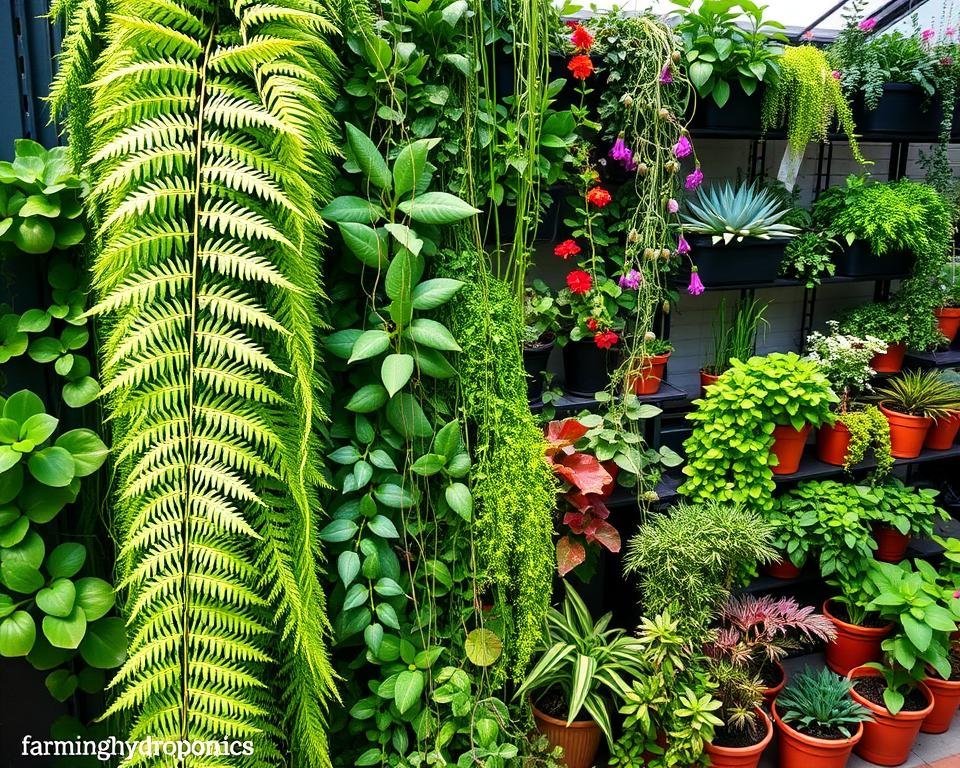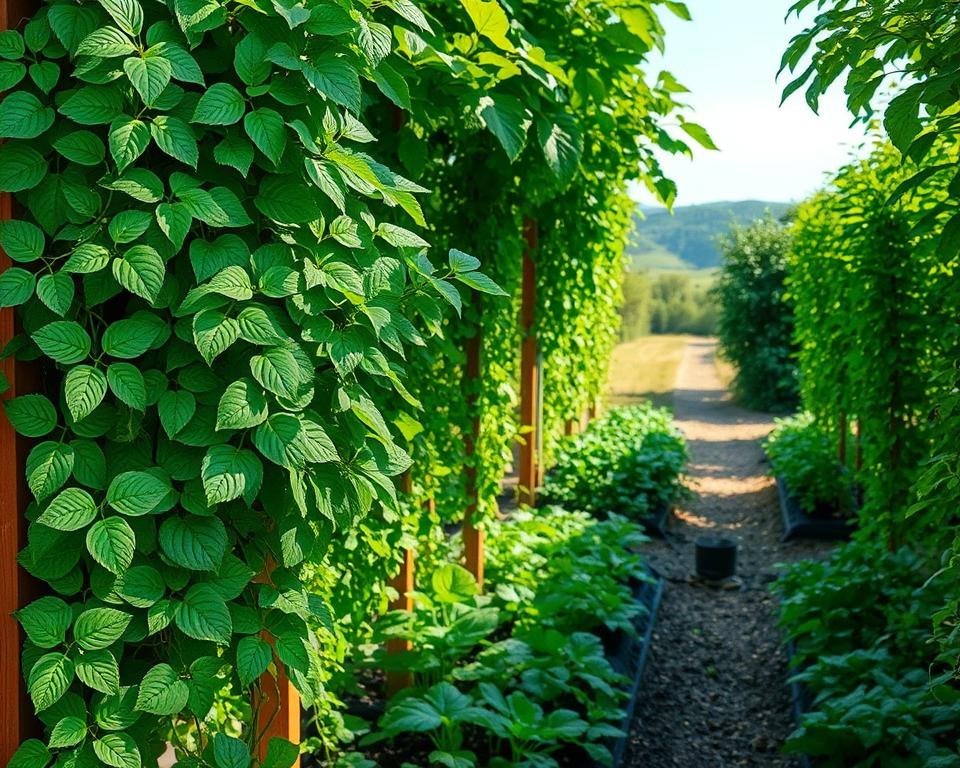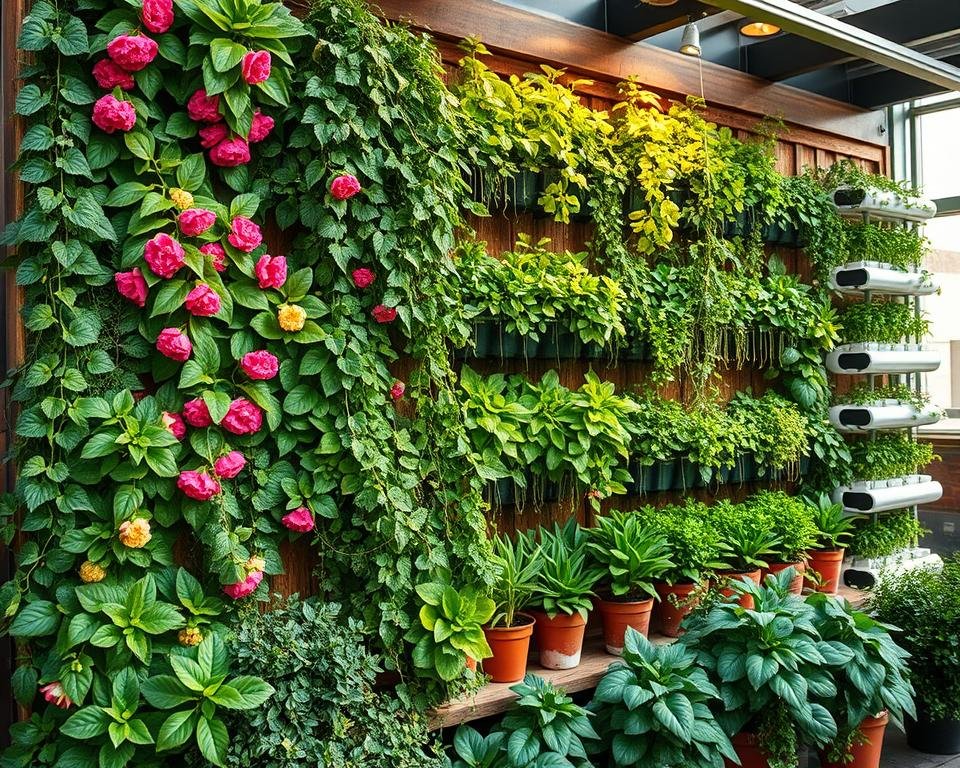Essential Plant Care Tips for a Thriving Vertical Garden
Ever dreamed of turning a small urban spot into a lush oasis? Vertical gardening might be your answer. I once had a tiny gardening space, but then I discovered vertical gardening. It’s a game-changer that turns small areas into stunning green spaces.
Vertical gardens are more than a trend. They’re a smart choice for city folks, with over 60% facing space limits. They let you create a beautiful garden that also boosts air quality by up to 30%.
Whether you’re new to gardening or have experience, vertical garden plant care is exciting. It lets you turn even the tiniest balcony or indoor spot into a lush masterpiece.
Key Takeaways
- Vertical gardens maximize limited urban spaces
- Improves air quality and aesthetic appeal
- Suitable for various skill levels
- Adaptable to indoor and outdoor environments
- Provides opportunities for growing herbs and small crops
Understanding Vertical Garden Basics
Vertical gardening changes how we grow plants, offering new ways for indoor and outdoor spaces. It uses space up instead of out, ideal for city living and small gardens.
Vertical gardens can save up to 80% of ground space compared to regular gardening. They’re a smart way to grow plants in tight spots, like small balconies or tiny backyards.
Types of Vertical Garden Systems
There are many vertical garden systems for different needs and spaces:
- Living Walls: Full wall coverage with integrated plant systems
- Trellises: Structured supports for climbing plants
- Pocket Gardens: Fabric or container-based vertical growing solutions
- Hanging Baskets: Suspended plant containers ideal for herbs and small plants
Benefits of Growing Plants Vertically
Vertical gardening has many benefits for both indoor and outdoor plants:
- Space optimization
- Improved aesthetic appeal
- Enhanced air circulation
- Reduced soil-borne disease risks
- Easier plant maintenance
Location and Light Requirements
Choosing the right spot is key for a vertical garden. Think about sunlight, wind, and how easy it is to get to. Most need 6-12 inches from the wall for air to flow.
Pro tip: Group plants with similar light and water needs to ensure healthy growth and simplify maintenance.
Whether for indoor plants or outdoor gardens, knowing these basics will help you create a lush, space-saving green space.
Selecting the Right Plants for Your Vertical Garden

Starting a vertical garden means picking the right plants. The right choice can make your garden a success. It’s important to know what each plant needs and how it fits with your garden’s setup.
Some top picks for vertical gardens include:
- Herbs: Basil, mint, thyme, and rosemary do well in tight spaces
- Vegetables: Lettuce, spinach, and cherry tomatoes grow great
- Flowers: Petunias, marigolds, and nasturtiums bring bright colors
- Decorative Plants: Ferns and succulents add texture and interest
When picking plants, think about these key points:
- How deep the roots grow (choose plants with shallow roots)
- How much light they need (most veggies need 6-8 hours)
- How much water they need and how to water them
- How heavy they are and if they need extra support
Vertical gardening is great for small spaces or big backyards. It lets you use every inch of space for beautiful plants. With the right plants, your vertical garden will be a stunning addition to your home.
Plant Care and Maintenance Fundamentals
To make your vertical garden flourish, you need to care for your plants well. Knowing what your plants need is key. This knowledge helps you grow healthy plants and avoid problems.

Looking after a vertical garden is different from regular gardening. You must learn important care techniques. These help your plants stay healthy and grow well.
Watering Techniques and Schedules
Vertical gardens need more water because of their design. The right watering schedule depends on several things:
- What kind of plants you have
- The room temperature (60-75 degrees Fahrenheit)
- How humid it is (40-60 percent is best)
- The time of year
Fertilization Methods
Fertilizing your plants right is very important. Here are some tips for fertilizing:
| Fertilizer Type | Application Frequency | Best Use |
|---|---|---|
| Slow-release fertilizers | Every 2-3 months | Consistent nutrient delivery |
| Liquid fertilizers | 1-2 times per month | Active growth periods |
Pruning and Training Plants
Pruning is crucial for managing your plants in a vertical garden. Regular care stops plants from getting too crowded. It also helps them grow healthily. Here are some pruning tips:
- Take out dead or yellow leaves
- Trim too much growth
- Shape plants to fit the vertical space
- Make new growth by cutting strategically
By following these care and maintenance tips, your vertical garden will thrive indoors. Paying attention and knowing what each plant needs is the secret to a successful garden.
Common Vertical Garden Challenges
Vertical gardening comes with its own set of challenges. These can test even the most seasoned gardeners. Knowing these challenges helps you fight pests and diseases better. Your garden’s success depends on tackling these issues head-on.
Pest control is key in vertical gardens. Pests can spread fast in tight spaces. Regularly check your plants for pests. Use natural pest control like neem oil to keep your garden safe.
Diseases can also be a problem in vertical gardens. Make sure plants have enough space and air. Clean your tools and watch for signs of disease. Choosing the right plants and soil can help a lot.
Structural support is also important. Choose strong mounting systems that can handle the weight and weather. Check your setup often to avoid any damage. A sturdy setup means a healthy garden in the city.







